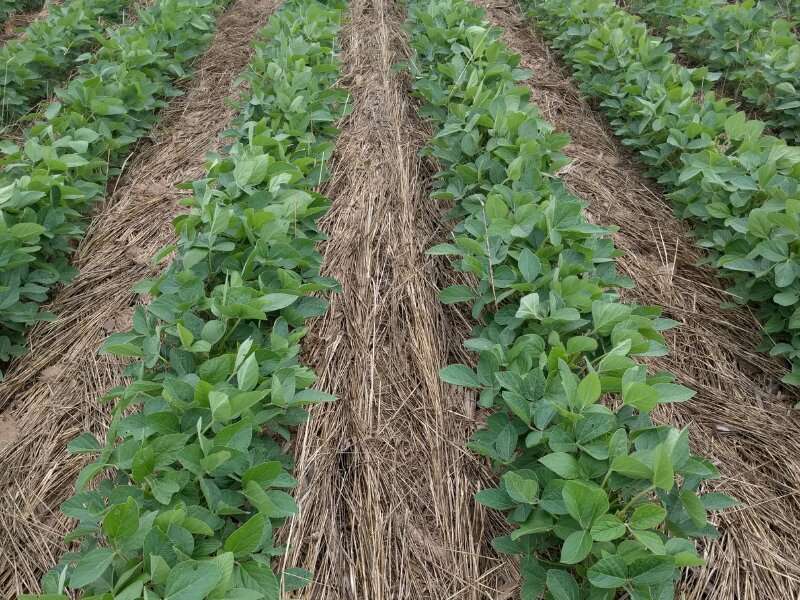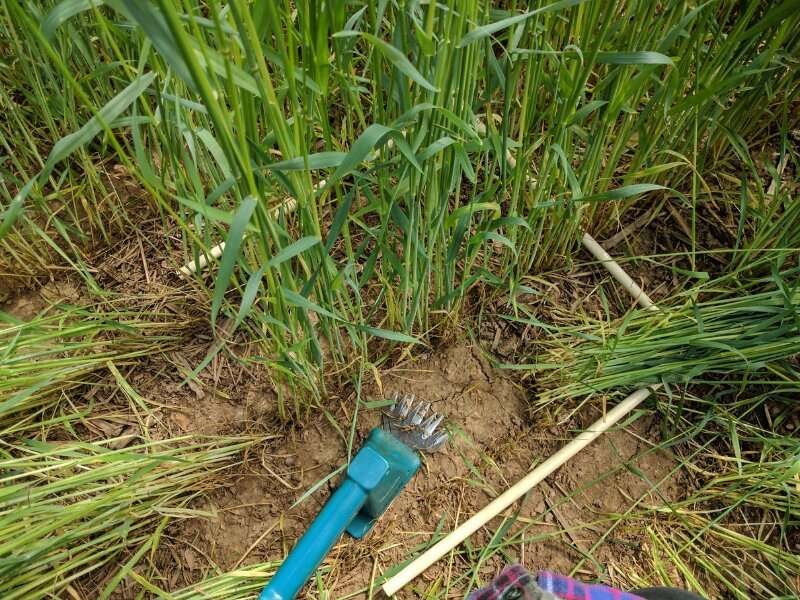Uncovering best practices for cover crops to optimize crop production

Planting cover crops is a beneficial agricultural practice. One of their many benefits is to cover soil for times when farmers cannot plant cash crops like corn and soy—over the winter, for example. But it is not as simple as just growing cover crops in between growing seasons. Farmers have multiple decisions to make about optimizing cover crop production.
Researchers like Heidi Reed at Pennsylvania State University want to help farmers make the best decisions about their cover crops. In a recent study, Reed and her team looked at the impact of cereal rye seeding rate, termination time, and nitrogen rate. The study was published in Agronomy Journal, a publication of the American Society of Agronomy.
The research focused on the effects cover crops have on both soil and soybeans after planting. Their study took place at two sites in Pennsylvania over the course of three years. "This type of applied research is so important because sustainable practices need to work for farmers," Reed explains. "We want these methods to be adopted at a large scale."
The rye seeding rate is the amount of cereal rye seed that is planted in a certain area. The researchers tested three different seeding rates. Similarly, the nitrogen rate is the amount of nitrogen fertilizer applied in each area. They tested two different amounts in the study.
Termination time is more complex. It has to do with when the cover crop is killed to make room for the crop the farmer will grow and sell, which was soybeans in the study. "Preplant-kill" is when the cover crop is killed before soybeans are planted. "Planting green" is when the cover crop is killed after the soybeans are planted. This means the cover crop is green and growing when the soybeans are planted. The researchers were curious about how the termination time would impact soybeans.

"Termination timing can impact soybeans because it greatly alters the environment into which soybeans are planted," Reed says. "Termination timing impacts more than just the size of a cover crop. A later terminated cover crop will have more biomass than an early terminated cover crop due to its longer time growing. Termination timing also impacts whether the cover crop plant is dead or alive at the time of soybean planting."
Reed and her team hypothesized that the seeding rate would impact rye biomass, meaning the total amount of the plant growing. This meant it could also impact the soybeans in some way. They thought something similar about the nitrogen rate. They hypothesized that more nitrogen would result in more rye biomass.
However, the study results were mixed. They found that rye seeding rate had no impact on rye biomass or soil moisture, which then resulted in no impact on soybeans. When paired with planting green, the higher nitrogen rate reduced soybean yield. But planting green combined with the lowest rye seeding rate and lowest nitrogen rate was able to keep soybeans yields stable and did not require as much rye seed and fertilizer as other options.
Overall, planting green had many benefits. It doubled the cereal rye biomass because it was able to live longer. While it resulted in drier soil at planting, planting green saved soil moisture later in the season and kept the soil cooler.
"Our results showed that farmers in similar climates to Pennsylvania can reduce the seeding rate of a cereal rye cover crop to 34 kilogram/hectare (kg/ha) and apply a rate of 34 kg/ha fertilizing nitrogen and maintain soybean yield while receiving the benefits of planting green, specifically soil moisture management," Reed says.
"This research is interesting to me personally because I am passionate about promoting cover crops," Reed says. "Finding ways to lower the barrier to adoption of cover crops and potentially help farmers increase profitability is very satisfying."
More information: Heidi K. Reed et al, Does winter cereal rye seeding rate, termination time, and N rate impact no‐till soybean?, Agronomy Journal (2022). DOI: 10.1002/agj2.21030
Journal information: Agronomy Journal
Provided by American Society of Agronomy





















